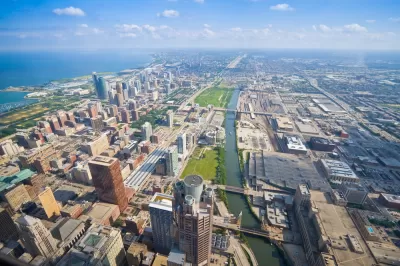The city is losing black residents, but those who stay are relocating to parts of the city with less transportation access and opportunities.

David Zegeye explores the decrease in Chicago's black population and the relationship to transportation access and mobility. "Many population losses happened along formerly vibrant streets, and corridors that have been significant in Chicago’s Black history and culture."
Of the small number of Chicago neighborhoods with increases in black residents, only a handful are historically black neighborhoods, says Zegeye. "What is also striking is that many of these communities are at the edge of the city, where there are fewer businesses, commercial corridors, and transportation options."
Transit and transportation infrastructure improvements are short-term solutions to stemming the flow of black residents, but longer-term strategies also need to address the effects of segregation, says Zegeye. "This can only be done when the city recognizes disinvestment in these neighborhoods as a public health and safety issue, and as an act of injustice."
FULL STORY: How Chicago’s legacy of segregation has pushed Black people into transit, job deserts

Maui's Vacation Rental Debate Turns Ugly
Verbal attacks, misinformation campaigns and fistfights plague a high-stakes debate to convert thousands of vacation rentals into long-term housing.

Planetizen Federal Action Tracker
A weekly monitor of how Trump’s orders and actions are impacting planners and planning in America.

In Urban Planning, AI Prompting Could be the New Design Thinking
Creativity has long been key to great urban design. What if we see AI as our new creative partner?

How Trump's HUD Budget Proposal Would Harm Homelessness Response
Experts say the change to the HUD budget would make it more difficult to identify people who are homeless and connect them with services, and to prevent homelessness.

The Vast Potential of the Right-of-Way
One writer argues that the space between two building faces is the most important element of the built environment.

Florida Seniors Face Rising Homelessness Risk
High housing costs are pushing more seniors, many of them on a fixed income, into homelessness.
Urban Design for Planners 1: Software Tools
This six-course series explores essential urban design concepts using open source software and equips planners with the tools they need to participate fully in the urban design process.
Planning for Universal Design
Learn the tools for implementing Universal Design in planning regulations.
Gallatin County Department of Planning & Community Development
Heyer Gruel & Associates PA
JM Goldson LLC
Mpact (founded as Rail~Volution)
City of Camden Redevelopment Agency
City of Astoria
Jefferson Parish Government
Camden Redevelopment Agency
City of Claremont





























